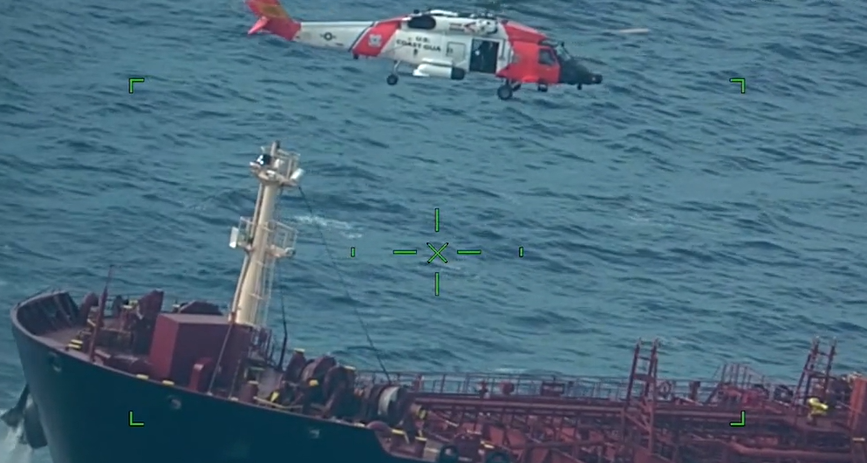PHOTOS AND VIDEO AVAILABLE: Coast Guard conducts medevac approximately 223 miles southeast of Cape Hatteras, North Carolina
U.S. Coast Guard sent this bulletin at 07/19/2021 08:20 PM EDT
| News Release |
U.S. Coast Guard 5th District Mid-Atlantic |
PHOTOS AND VIDEO AVAILABLE: Coast Guard conducts medevac approximately 223 miles southeast of Cape Hatteras, North Carolina
Editors' Note: Click on images to download high resolution version.
ELIZABETH CITY, N.C. — The Coast Guard medevaced a man from motor vessel CL Yingdu, approximately 223 miles southeast of Cape Hatteras on Saturday.
Watchstanders from the U.S. Coast Guard Fifth District command center received notification that a man aboard the vessel was suffering from an eye injury and needed medical attention.
The command center consulted with a U.S. Coast Guard flight surgeon who recommended medical evacuation.
An MH-60 Jayhawk helicopter and an HC-130 Hercules aircraft from U.S. Coast Guard Air Station Elizabeth City were dispatched.
The MH-60 Jayhawk aircrew arrived on scene and deployed a rescue swimmer to conduct a hoist and medevac the injured man.
The patient was transferred to Sentara Norfolk General Hospital in Norfolk, Virginia for treatment.
“We generally hoist from the back of a vessel but because of a lack of suitable space for hoisting operations we had to hoist from the front, which essentially put the helicopter in a flying position that is unfamiliar to routine operations,” said Lt. j.g. Marissa Bonnefin, the MH-60 Jayhawk copilot. “We receive a variety of training and work alongside members who have valuable experience. As an aircew we were able to implement the training and knowledge that we each have into the evolution to safely conduct the mission.”
-USCG-




